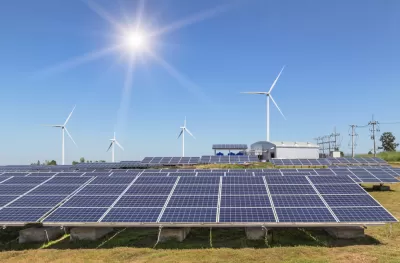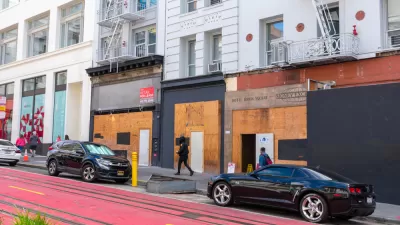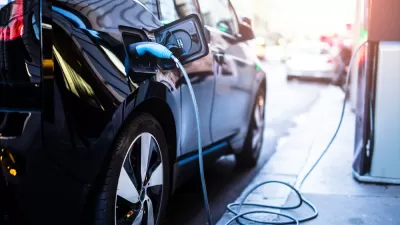Renewables generated more electricity than coal in 2022, according to preliminary estimates. Greenhouse gases still rose, however, due mostly to increased emissions from buildings.

The Rhodium Group has released preliminary estimations of U.S. greenhouse gas emissions for 2022, estimating that the country emitted more in 2022 than in 2021, despite renewable energy production surpassing coal for the first time.
An article by Alfredo Rivera, Ben King, John Larsen, and Kate Larsen announces the new emissions estimate report, putting the country’s emissions in 2022 in context of the global disruption caused by the Russian invasion of Ukraine, the sharp emission declines of the early Covid-19 pandemic, and the growth of the overall U.S. economy.
“Based on preliminary economic activity and energy data, Rhodium Group estimates that greenhouse gas (GHG) emissions in the US slightly increased in 2022, rising 1.3% compared to the previous year. While this is the second year in a row that emissions have increased, it nonetheless marks a change from 2021, when emissions rebounded faster than the economic growth rate.”
As hinted in that passage, the silver lining of the report is that U.S. emissions did not grow faster than the U.S. economy, like they did in 2021. The unequivocally bad news, however, is that emissions rose in every sector other than energy production last year.
“The most significant increase was seen in direct emissions from buildings, which rose by 6% and was the only sector to rebound to pre-pandemic levels (Figure 3). This was largely due to increased energy consumption for heating in homes, as 2022 reported below-average winter temperatures,” according to the article.
The Rhodium Group’s article, also linked as the source article below, includes specific focus on the breakdown of U.S. energy production in 2022, other sectors, and the ongoing chase to meet Paris Climate Agreement targets for emissions reductions.
“With the slight increase in emissions in 2022, the US continues to fall behind in its efforts to meet its target set under the Paris Agreement of reducing GHG emissions 50-52% below 2005 levels by 2030,” according to the article. “In 2022, emissions reached only 15.5% below 2005 levels. In order to meet the 2025 target of 26-28% below 2005 levels and get back on track for the 2030 Paris goal, the US needs to significantly increase its efforts.”
The article also expresses optimism that the Inflation Reduction Act will provide a turning point for emissions reductions in the United States.
News coverage of the report is available from Maxine Joselow at the Washington Post.
FULL STORY: Preliminary US Greenhouse Gas Emissions Estimates for 2022

Planetizen Federal Action Tracker
A weekly monitor of how Trump’s orders and actions are impacting planners and planning in America.

Restaurant Patios Were a Pandemic Win — Why Were They so Hard to Keep?
Social distancing requirements and changes in travel patterns prompted cities to pilot new uses for street and sidewalk space. Then it got complicated.

Map: Where Senate Republicans Want to Sell Your Public Lands
For public land advocates, the Senate Republicans’ proposal to sell millions of acres of public land in the West is “the biggest fight of their careers.”

Maui's Vacation Rental Debate Turns Ugly
Verbal attacks, misinformation campaigns and fistfights plague a high-stakes debate to convert thousands of vacation rentals into long-term housing.

San Francisco Suspends Traffic Calming Amidst Record Deaths
Citing “a challenging fiscal landscape,” the city will cease the program on the heels of 42 traffic deaths, including 24 pedestrians.

California Homeless Arrests, Citations Spike After Ruling
An investigation reveals that anti-homeless actions increased up to 500% after Grants Pass v. Johnson — even in cities claiming no policy change.
Urban Design for Planners 1: Software Tools
This six-course series explores essential urban design concepts using open source software and equips planners with the tools they need to participate fully in the urban design process.
Planning for Universal Design
Learn the tools for implementing Universal Design in planning regulations.
Heyer Gruel & Associates PA
JM Goldson LLC
Custer County Colorado
City of Camden Redevelopment Agency
City of Astoria
Transportation Research & Education Center (TREC) at Portland State University
Camden Redevelopment Agency
City of Claremont
Municipality of Princeton (NJ)





























